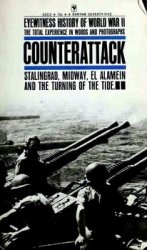Named “White Wing” to satisfy President Johnson’s concern for public opinion. In the course of the operation one of the first missions of Project “Delta”, a programme of long-range reconnaissance deep inside areas under communist control, met disaster in the valley. Project “Delta” was overhauled as a result. A year later, during Operation “Thayer Il/Pershing”, two Vietnamese Marine battalions drove 5,200 people out of the valley, of whom only 1,886 could be resettled. WST.
An Loc, siege of. South Vietnam’s Binh Long province northwest of Saigon was one of four “fronts” struck by communist forces during the Easter offensive of 1972. In early April, two tank-led regiments of the People’s Liberation Armed Force (plaf) 5th Division overran the town of Loc Ninh, whose inhabitants fled down highway 13 to An Loc, the province capital. The plaf 9th Division then laid siege to An Loc, which contained the Army of the Republic (arvn) 5th Infantry Division and about 10,000 civilians. The People’s Army (pavn) 7th Division blocked the highway. Seven communist regiments eventually took positions around the town and fired thousands of mortar, 155mm howitzer and 122mm rocket rounds into it each day. The communists blunted aerial attack with SAM missiles and anti-aircraft guns and tried three times to breach the town’s defences in tank-led assaults. A relief effort by the ARVN 21st Division and Palace Guard bogged down. Credit for breaking the siege on June 18 went to a makeshift defence organized by the province chief and to extremely heavy B-52 and tactical air strikes. The battle marked the first communist use of heavy artillery and armour so near Saigon, and it raised doubts that the arvn would be able to withstand such assaults without American air-power. WST.
Ansaldo SVA-5 (Italian, WWI). Single-seat reconnaissance bom-ber/fighter. Prototype flew March 3 1917; production started autumn 1917. Operational use on strategic reconnaissance and light bombing began February 1918. Production (several versions) 1917—18 totalled 1,248; floats fitted to some 50 SVA-5s. 220hp SPA Type 6A or 250hp Isotta-Fraschini engine; max. speed 143mph (229kph); two 7.7mm machine guns.
Anschluss. The term used to describe the integration of Austria into Germany against the wish of the Austrian Chancellor, Schusch-nigg, which Hitler achieved on March 13 1938. France, Britain and Italy turned a blind eye.
Anson, Avro 652A (Br, WWIl). General reconnaissance/trainer. Prototype flew March 24 1935; first deliveries No. 48 Squadron, raf, February 1936. Initially undertook coastal reconnaissance; later extensively used as trainer and communications aircraft. Progressive developments through many Marks; total built 11,022. Two 335/395hp Armstrong-Siddeley Cheetah engines; max. speed 188mph (300kph); two 0.303in machine guns, 3601b (162kg)
Bombs.
Anti-aircraft warfare. During World War I the development of military aircraft led to a requirement for defence against attack from the air. Rifles and machine guns were supplemented by high elevation artillery, while searchlights were increasingly employed to illuminate hostile aeroplanes. Further defence was offered by barrage balloons that forced aircraft to fly high. By World War II, air defence systems had greatly advanced and continued to do so throughout the conflict. The introduction of radar added a new dimension to existing methods of sound and visual detection of aircraft. It was also used increasingly in the fire control systems of improved anti-aircraft artillery. Furthermore, refinements in barrage techniques and the development of the proximity fuse helped to produce even better results. The surface-to-air missile (sam) now offers ground and naval forces their most effective protection against air attack. MS.
Anti-Ballistic Missile Missile (ABM Missile). A missile designed to shoot down an incoming long-range ballistic missile. Crude ABM missiles were developed in the 1960s by both superpowers, but the problem of hitting a very fast, small target like a ballistic missile re-entry vehicle is such that two complementary missiles with nuclear warheads are required for any chance of success, one designed to engage in space, i. e. exoatmospherically, and the other in the atmosphere, i. e. endoatmospher-ically. The Americans dismantled their Safeguard system with its Spartan and Sprint missiles in 1976, but the USSR is still deploying 32 exoatmospheric “Galosh” ABM missiles around Moscow and is developing a “Gazelle” endoatmospheric missile. Deployment and further development of ABM missiles is subject to the ABM Treaty (see below). The Strategic Defence Initiative includes research into new kinds of non-nuclear abm missile, including space-based systems. EJG.
Anti-Ballistic Missile (ABM) Treaty. The treaty signed in Moscow on May 26 1972 by President Nixon for the United States and General Secretary Brezhnev for the USSR, limiting each superpower to two deployment areas for anti-ballistic missile (abm) missiles, one defending the national capital and the other a launch complex for intercontinental ballistic missiles (icbms). The treaty entered into force on October 3 1972 and was strengthened by a Protocol signed in Moscow on July 3 1974 in which each side agreed to only one abm missile area, the Soviet one defending Moscow and the American an icbm complex. Since late 1985, controversy has arisen both within the USA and between the signatories over the treaty’s limitation on development of new ABM systems. The Reagan administration argued that its Strategic Defence Initiative was allowed by a “broad interpretation” of the treaty. EJG.
Anti-Satellite System (ASAT). Designed to destroy orbiting satellites. The Soviet Union has experimented with ASATS consisting of explosive spacecraft manoeuvred into close proximity to the target spacecraft. This remains operational according to American reports but has not been tested for some time. The Americans have developed an air-launched asat




 World History
World History









